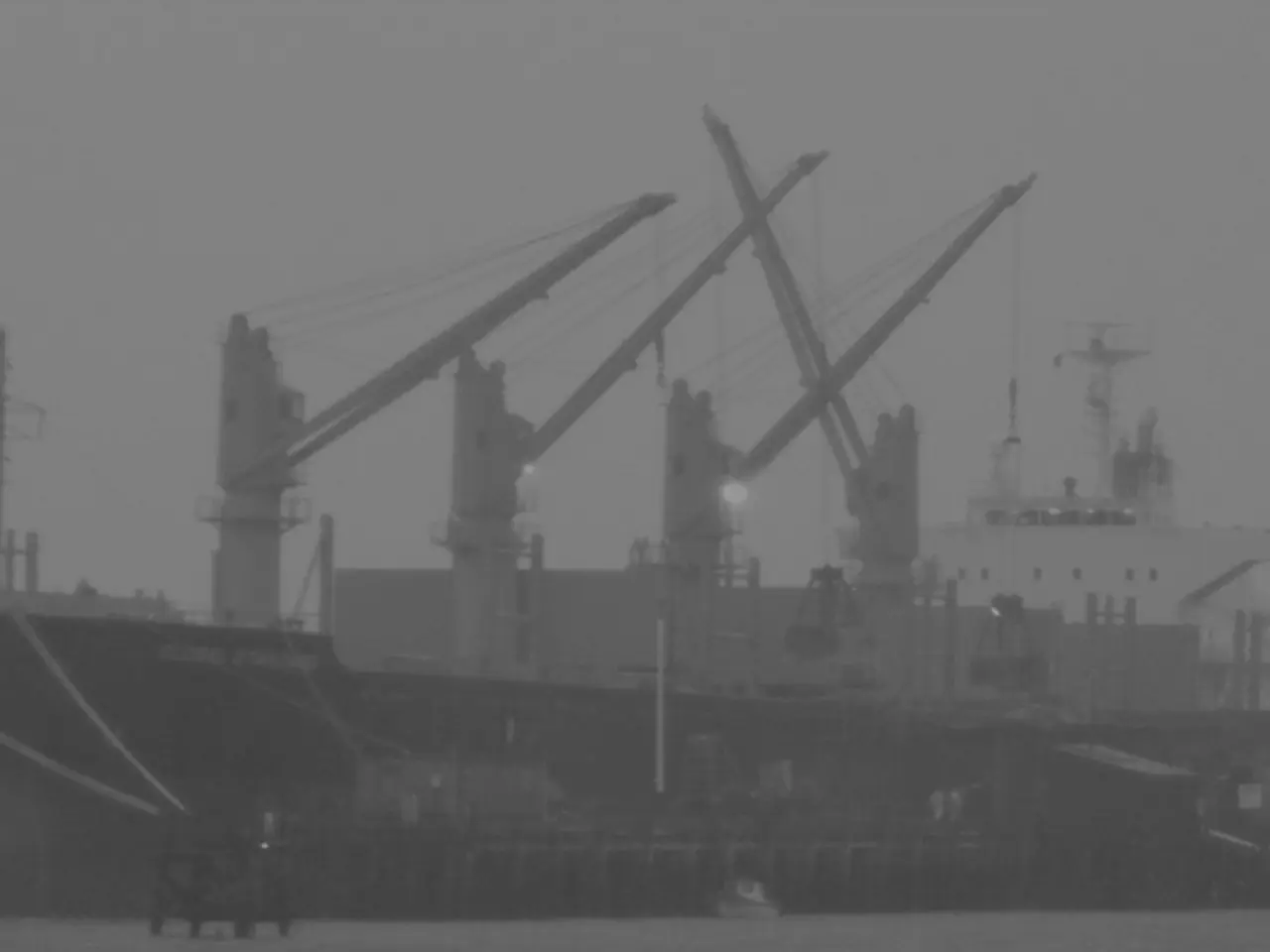U.S. Attacks Houthi Anti-Ship Missiles, Intensifying Harassments to Maritime Trade
The Red Sea, a vital maritime trade artery, has been engulfed in a crisis that has been ongoing since late 2023. The conflict, primarily between the Houthi rebel group and regional intervention forces, has resulted in a highly unstable maritime security environment, marked by repeated missile, drone, and naval vessel attacks, including those targeting commercial shipping[2][3].
The escalating hostilities have had a significant impact on global trade and supply chains.
Disruptions to Shipping Routes
Major shipping companies, including Denmark's Maersk, have instructed vessels to avoid the Red Sea due to the ongoing violence. This has led to ships taking the much longer route around Africa’s Cape of Good Hope, adding 10-14 days to journeys[4]. This diversion increases fuel, crew, and insurance costs, inflating shipping expenses and causing delays in container deliveries.
Increased Risks and Congestion
Persistent threats and security concerns have raised insurance costs for shipping companies, heightening risks of maritime congestion in alternative routes[4]. European ports are preparing for potential congestion due to the Red Sea crisis.
Environmental Concerns
Attacks have led to oil spills in the Red Sea region, causing ecological risks to marine and coastal environments. Satellite images have documented large oil slicks affecting protected areas, indicating severe environmental side effects of the military engagements and shipping disruptions[5].
Humanitarian Challenges
The crisis has also endangered migrant crossings, with the Red Sea becoming a perilous passage where migrant vessels receive limited rescue assistance due to piracy fears and military focus on protecting oil tankers and counter-piracy rather than migrants[1].
The Global Impact
The Red Sea crisis has the potential to impact various aspects of the business world, including shipping patterns and ports. The crisis is causing disruptions in global shipping traffic, as it accounts for 15% of global shipping traffic[6]. The disruptions have the potential to cause supply bottlenecks and even inflation.
On January 18, the United States conducted strikes against two anti-ship missiles being prepared by Yemen's Houthi rebels in response to an imminent threat to shipping and U.S. Navy vessels in the Red Sea[7]. The Houthi militia, an Iran-allied group, has threatened to target U.S. ships in response to these strikes[8].
The crisis is also affecting business patterns, including bunker fuel demand and container terminals. The situation in the Red Sea is evolving, with potential implications for global trade and supply chains. The Pentagon emphasized that the strikes were defensive acts to protect the seas and not an indication of war with the Houthis[9].
As the crisis continues, alternative routes around South Africa's Cape of Good Hope could add significant time to journeys compared to the Red Sea and Suez Canal, impacting revenue from the Suez Canal, with a 40% decline in January, affecting Egypt's economy[10]. The crisis is a reminder of the complex and interconnected nature of global trade and the challenges that can arise from geopolitical conflicts.
The Red Sea crisis, with its impact on shipping routes, poses a threat to global businesses, particularly those dependent on maritime trade. As major shipping companies divert their vessels around Africa's Cape of Good Hope, this could lead to increased costs, delays, and potential supply bottlenecks, affecting businesses worldwide.
The volatile political climate and military conflicts in the Red Sea region have the potential to influence business patterns, such as bunker fuel demand and container terminal operations, further challenging the global business landscape.








